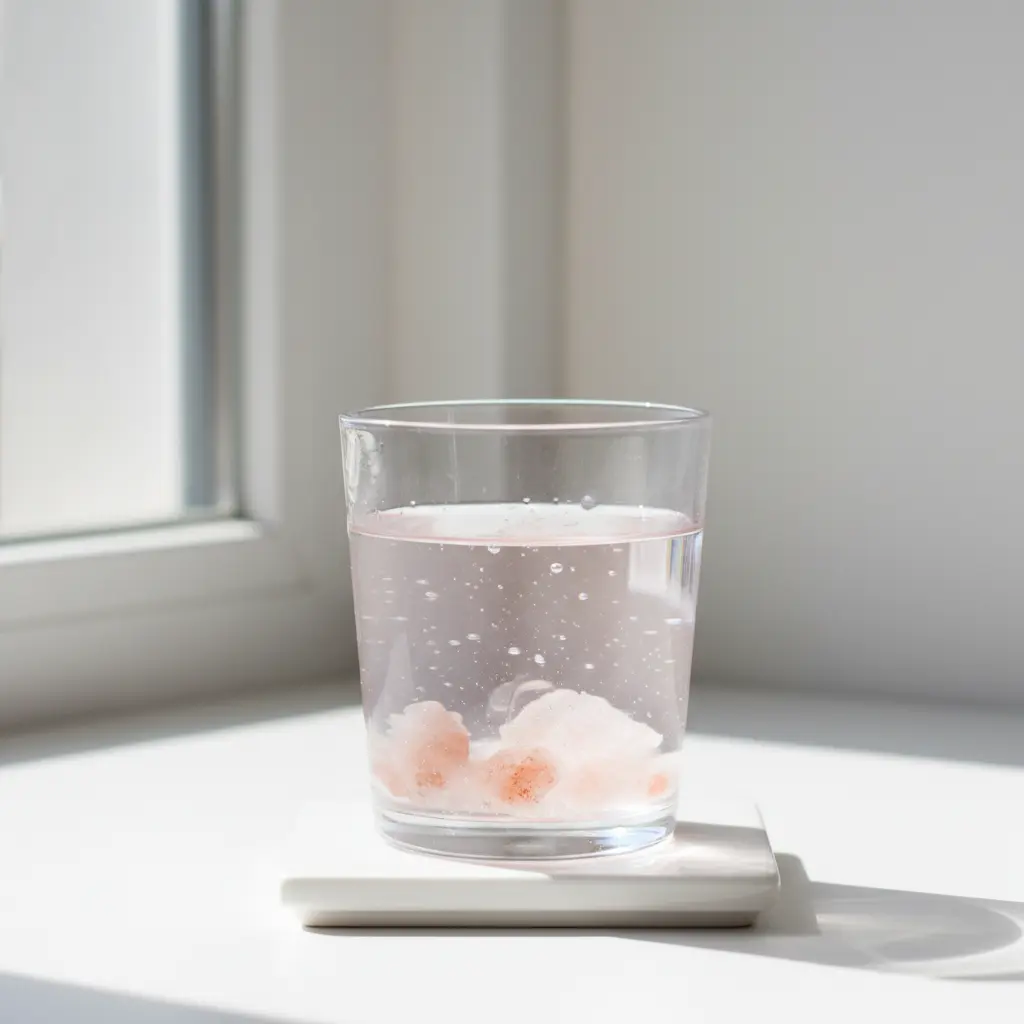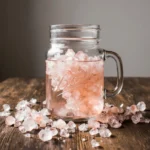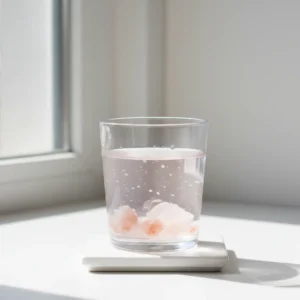Pink salt sole water is a saturated solution of Himalayan pink salt and water, promoted for benefits like hydration and mineral replenishment. While wellness trends praise it as a morning ritual, medical experts caution that claims are largely unproven and highlight the potential health risks associated with its high sodium content.
Growing up, my grandmother swore by a daily teaspoon of cloudy, pink-tinged water. She called it her “secret” to boundless energy. That “secret,” pink salt sole water, has since exploded into a wellness phenomenon. But does the science support the hype?

What Is Pink Salt Sole Water?
Sole (pronounced “so-lay”) water is water that has been fully saturated with Himalayan pink salt. The process involves leaving salt crystals in water until they no longer dissolve, creating a concentrated mineral solution. Proponents claim that drinking a small amount of this solution diluted in water helps the body absorb 84 trace minerals.
Claimed Benefits vs. The Scientific Evidence
Sole water enthusiasts promote a long list of health benefits. Let’s examine the most popular claims and what science says about them.
Claim 1: Improves Hydration & Electrolyte Balance
The Claim: The electrolytes in sole water hydrate you more effectively than plain water.
Claim 2: Supports Weight Loss
The Claim: Sole water boosts metabolism and reduces cravings.
The Evidence: There is no scientific evidence that sole water directly causes weight loss. While severe mineral deficiencies can slow metabolism, the trace amounts in pink salt are unlikely to have a significant effect. Any weight loss is more likely due to better hydration or a placebo effect.
Claim 3: Improves Sleep & Reduces Stress
The Claim: The mineral content, especially magnesium, promotes restful sleep.
The Expert Opinion: What Doctors Are Saying
“You’d have to consume incredibly high amounts of sole water to get any significant amount of minerals other than sodium. And at that point, the sodium content would be well over a healthy intake.”
— Gillian Culbertson, RD, LD, via Cleveland Clinic
Potential Risks and Who Should Avoid Sole Water
- High Blood Pressure: Excess sodium is a well-known contributor to hypertension.
- Kidney Disease: High salt intake can strain the kidneys.
- Heart Disease & Stroke: A high-sodium diet increases the risk of cardiovascular events.
- Water Retention: Contrary to hydration claims, too much salt can cause bloating and water retention.
You should avoid sole water if you have:
- High blood pressure
- Kidney disease
- Heart conditions
- Or if you are on a low-sodium diet.
How to Make Pink Salt Sole Water (Safely)
If you decide to try sole water despite the risks, it is critical to prepare and consume it correctly. This recipe is for educational purposes only; always consult a healthcare provider first.

Pink Salt Sole Water
Equipment
- glass jar with non-metal lid
- wooden or plastic spoon
- fine-mesh strainer (optional)
Ingredients
- 1 cup Himalayan pink salt crystals (coarse, high quality)
- 3 cups filtered or spring water (avoid tap water)
Instructions
- Fill a clean glass jar 1/4 full with Himalayan pink salt crystals.

- Add filtered water until the jar is nearly full, leaving 1–2 inches at the top. Stir gently with a wooden or plastic spoon.
- Cover with a non-metal lid and let sit for 24 hours. Check if salt crystals remain at the bottom — this indicates saturation.
- If no crystals remain, add more salt until some stay undissolved. This ensures the solution is fully saturated.
- The sole water concentrate is ready when the liquid is slightly cloudy and crystals remain at the bottom. Store at room temperature away from sunlight.
- To use: dilute 1 teaspoon of sole concentrate in 8 oz of filtered water and drink on an empty stomach each morning.
Notes
Ingredients & Equipment
- 1 glass jar with a non-metal lid
- Coarse Himalayan pink salt
- Filtered water
- A non-metal spoon
Step-by-Step Instructions
- Fill the jar about 1/4 full with pink salt crystals.
- Fill the rest of the jar with filtered water, leaving an inch of space at the top.
- Cover with the non-metal lid, shake gently, and let it sit for 12-24 hours.
- If all the salt has dissolved, add more salt until some crystals remain at the bottom. This means the water is fully saturated. Your sole concentrate is now ready.
How to Drink It
DO NOT DRINK THE CONCENTRATE STRAIGHT. It is dangerously high in sodium.
Stir 1/2 to 1 teaspoon of the sole water concentrate into a full 8-ounce (240 ml) glass of fresh water and drink it once per day.
Frequently Asked Questions
Is pink salt sole water actually good for you?
There is little scientific evidence to support the health claims. Medical experts warn that the high sodium content poses significant risks, such as high blood pressure and kidney strain, that likely outweigh any potential benefits from trace minerals.
Can pink salt sole water help with weight loss?
No, there is no scientific proof that sole water causes weight loss. Its effects are often misattributed to proper hydration or a placebo effect.
How much sodium is in sole water?
A single teaspoon of sole concentrate can contain 400 mg of sodium or more. This is nearly 20% of the recommended daily limit for an adult.
What’s better than sole water for hydration?
Plain water is sufficient for hydration for most people. If you are an endurance athlete or sweating excessively, a balanced electrolyte drink with sodium, potassium, and magnesium is a better and safer choice.
Conclusion: The Final Verdict
For better health, focus on proven methods: drink plenty of plain water, eat a balanced diet rich in whole foods to get your minerals, and manage your sodium intake. Instead of relying on a salt-saturated elixir, let these foundational habits be the secret to your vitality.







2 thoughts on “Pink Salt Sole Water: Complete Benefits Guide + Easy Recipe (2025)”